Case Studies.
Add Case Study
Our Case Study database tracks 22,657 case studies in the global enterprise technology ecosystem.
Filters allow you to explore case studies quickly and efficiently.
Download Excel
Filters
-
(6,653)
- (2,601)
- (2,127)
- (945)
- View all
-
(5,642)
- (2,469)
- (1,692)
- (826)
- View all
-
(5,571)
- (2,178)
- (1,766)
- (643)
- View all
-
(5,247)
- (2,179)
- (1,715)
- (1,321)
- View all
-
(2,881)
- (1,448)
- (574)
- (376)
- View all
- View all 15 Technologies
- (1,985)
- (1,985)
- (1,915)
- (1,679)
- (1,629)
- View all 42 Industries
- (8,728)
- (4,742)
- (3,618)
- (3,233)
- (2,947)
- View all 13 Functional Areas
- (3,304)
- (2,787)
- (2,603)
- (2,006)
- (1,630)
- View all 129 Use Cases
- (13,581)
- (5,296)
- (4,272)
- (3,520)
- (2,856)
- View all 9 Services
- (504)
- (432)
- (416)
- (382)
- (301)
- View all 1083 Suppliers
Selected Filters
_10.jpg)
|
Cloud-based healthcare solution for Royal Philips
Royal Philips wanted to launch its cloud-based healthcare solution HealthSuite Digital Platform in China to deliver services to help cope with challenges related to urbanization and population growth. Philips wanted to achieve this goal by combining mobile, cloud computing and big data technologies. To bring this platform and product to market, Philips required cloud computing and local technical service capabilities in China, in addition to a flexible IT infrastructure that could handle user requests.
|
|
|
_18.jpg)
|
Harnessing real-time data to give a holistic picture of patient health
Every day, vast quantities of data are collected about patients as they pass through health service organizations—from operational data such as treatment history and medications to physiological data captured by medical devices. The insights hidden within this treasure trove of data can be used to support more personalized treatments, more accurate diagnosis and more advanced preparative care. But since the information is generated faster than most organizations can consume it, unlocking the power of this big data can be a struggle. This type of predictive approach not only improves patient care—it also helps to reduce costs, because in the healthcare industry, prevention is almost always more cost-effective than treatment. However, collecting, analyzing and presenting these data-streams in a way that clinicians can easily understand can pose a significant technical challenge.
|
|
|
|
|
Harley-Davidson Revs Up Logistics
Add speed, visibility and efficiency to the U.S. logistics processes of one of the world's leading motorcycle manufacturers, to accommodate growth and enhance service for manufacturing facilities and dealerships.
|
|
|

|
Process Control System Support
In many automated production facilities, changes are made to SIMATIC PCS 7 projects on a daily basis, with individual processes often optimised by multiple workers due to shift changes. Documentation is key here, as this keeps workers informed about why a change was made. Furthermore, SIMATIC PCS 7 installations are generally used in locations where documentation is required for audits and certification. The ability to track changes between two software projects is not only an invaluable aid during shift changes, but also when searching for errors or optimising a PCS 7 installation. Every change made to the system is labour-intensive and time-consuming. Moreover, there is also the risk that errors may occur. If a change is saved in the project, then the old version is lost unless a backup copy was created in advance. If no backup was created, it will no longer be possible to return to the previous state if and when programming errors occur. Each backup denotes a version used by the SIMATIC PCS 7 system to operate an installation. To correctly interpret a version, information is required on WHO changed WHAT, WHERE, WHEN and WHY: - Who created the version/who is responsible for the version? - Who released the version? - What was changed in the version i.e. in which block or module of the SIMATIC PCS 7 installation were the changes made? - When was the version created? Is this the latest version or is there a more recent version? - Why were the changes made to the version? If they are part of a regular maintenance cycle, then is the aim to fix an error or to improve production processes? - Is this particular version also the version currently being used in production? The fact that SIMATIC PCS 7 projects use extremely large quantities of data complicates the situation even further, and it can take a long time to load and save information as a result. Without a sustainable strategy for operating a SIMATIC PCS 7 installation, searching for the right software version can become extremely time-consuming and the installation may run inefficiently as a result.
|
|
|
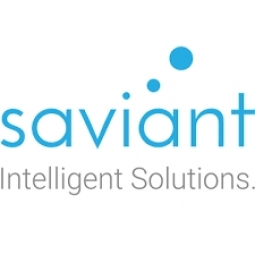
|
Transforming Water Utilities with IoT, saving a Billion Gallons every year!
The big problem that Utilities face includes:(i) How to make meters “smart” and ingest the data from homes to the companies and;(ii) how to derive intelligent actions from huge amounts of meter data, in an efficient and cost-effective way.Solving these problems would help Utilities track & monitor water consumption data, identify leakage, theft & various anomalies. This demands the need of a scalable system with remote asset management & proactive maintenance capabilities. This would also help end-consumers understand their water usage for better decision-making to conserve water.
|
|
|
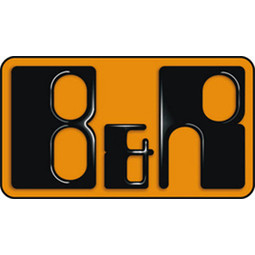
|
IIC - Time Sensitive Networking (TSN) Testbed
Manufacturing operations requires tight coordination of sensing and actuation to safely and efficiently perform closed loop control. Typically these systems have been deployed using non-standard network infrastructure or air-gapped (unconnected) standard networks. This approach leaves devices and data much harder to access and creates a technical barrier to IIoT which is predicated on the ability to consume data anywhere throughout the infrastructure.
|
|
|
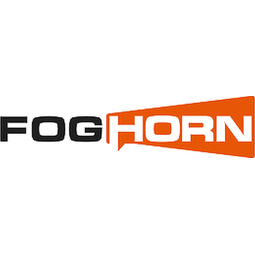
|
Pump Cavitation Detection
Cavitation is a condition can occur in centrifugal pumps when there is a sudden reduction in fluid pressure. Pressure reduction lowers the boiling point of liquids, resulting in the production of vapor bubbles if boiling occurs. This is more likely to happen at the inlet of the pump where pressure is typically lowest. As the vapor bubbles move towards the outlet of the pump where pressure is higher, they rapidly collapse (return to a liquid state) resulting in shock waves that can damage pump components.
|
|
|
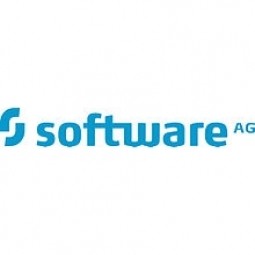
|
Coca-Cola Refreshments, U.S.
Coca-Cola Refreshments owns and manages Coca-Cola branded refrigerators in retail establishments. Legacy systems were used to locate equipment information by logging onto multiple servers which took up to 8 hours to update information on 30-40 units. The company had no overall visibility into equipment status or maintenance history.
|
|
|
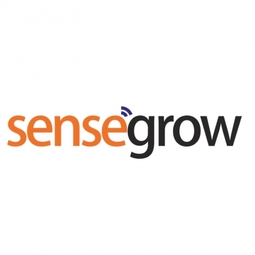
|
Medanta the Medicity
Medanta is one of India's largest multi-super specialty institutes located in Gurgaon, India. Some of the key challenges facing Medanta included: - No Monitoring & Control over Energy Use, Indoor Air Quality, Indoor Lighting Quality & Noise Levels. - No compliance monitoring of temperature & pressure in critical care wards. - Energy bills were a surprise with no way to forecast energy costs. - Missing data & insights that could be used for targeting areas of improvement. - Existing Billing Management System (BMS) was inflexible and could not be used across the enterprise to serve the needs of different users. Requirements Based on these challenges, Medanta was looking for a comprehensive solution to Monitor & Control: - Energy Usage - Power Generators - Clean Rooms - HVAC Temperature - Chiller Temperature - Hydrant Pressure - Air Quality & Noise Levels - Critical Wards
|
|
|
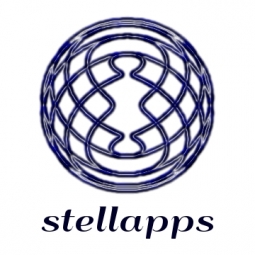
|
Remote Cold Chain Monitoring Solution
Challenges like Sub-standard quality milk because of not chilling at appropriate temperature by Operator & also differences in milk volume between procurement and chilling, at chilling center level and collection center level.
|
|
|
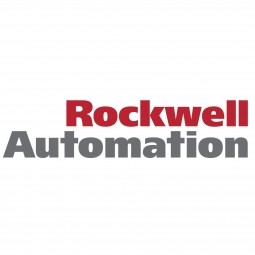
|
The Connected Enterprise Optimizes Facilities and Supplier Networks
Rockwell wanted to implement flexible and agile global MES for diverse product portfolio and a variety of manufacturing processes and replace individual ERP systems and custom application with a standardized system that spans all plants.
|
|
|

|
Predictive Analytics Generates Greater ROI for Customers
Manufacturing plants are running at a much higher capacity utilization than ever before. Often, it is a 24 hour a day, seven days a week operation. With downtime costing plants up to US$20,000 a minute, they cannot afford disruption to their processes. In fact, a single occurrence can cost a plant upwards of US$2 million.FANUC was struggling with lack of visibility into how their customers were leveraging FANUC equipment on the factory floor. The only insight was gained after a problem had already occurred resulting in costly downtime for the customer.
|
|
|

|
The Need for a Common HW/SW Solution for Mobile Computing
As enterprises work to manage all of this change within their available resources, one reality is clear. A common platform for enterprise applications, one that cuts across multiple form factors and leverages existing infrastructure investments, would save OEMs and their customers time, money and frustration.
|
|
|
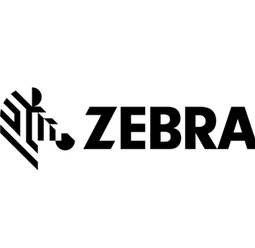
|
Jaguar Land Rover Speeds Order-to-Cash Cycle
At Jaguar Land Rover, vehicles physically move around the facility for testing, configuration setting, rework and rectification, leading to a longer search time to get each vehicle to its next process facility. The main goal is to minimize the vehicles' dwell time between end of line and the delivery chain which was previously a manually intensive process. Jaguar Land Rover's goal was to build on the success of an earlier RFID project and improve the efficiency of delivering vehicles to meet dealer orders.
|
|
|
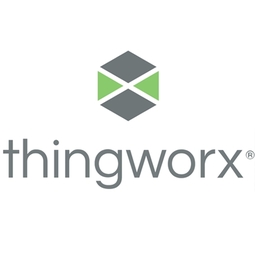
|
LumenData Delivers Real-time Predictive Analytics through IoT
In 2013, LumenData found itself in need of adding new real-time predictive analytics capabilities to its suite of services. To meet this need, LumenData acquired a state-of-the-art streaming data, capture and real-time predictive analytics company. This solved the pure predictive analytics end, but left LumenData with a need to be able to build IoT-targeted services.From an IoT perspective, LumenData was still missing the means to create suitable applications and dashboards that would make it easy for its customers to effortlessly make sense of whatever predictive analysis they might require.
|
|
|
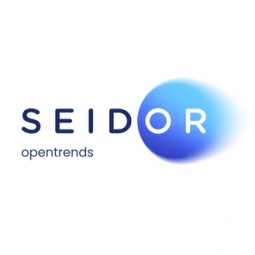
|
Barcelona's Smart City Platform
Barcelona city was receiving large amounts of data vertically organized, unable to effectively manage and visualize them in real time on one screen. Barcelona sought an innovative way of managing their assets and resources, along with improving their processes.Data coming from street lighting, traffic, blue zone free parking spots, waste disposal and trucks, acoustic and atmospheric contamination, irrigation system, electric supply stations sensors and actuators.
|
|
|

|
Smart, Connected Applications Drive IoT Road Side Safety
All Traffic Solutions needed to reduce software complexity so that they could quickly and effectively build out and enhance smart, connected applications without the need to develop their own backend infrastructure and development platform. Ted Graef, All Traffic Solution’s president, emphasizes that it is no longer enough for the company to deliver the best hardware; their hardware must become part of a larger ecosystem that is centered on automating all related business processes and evolving them into a simple-to-use suite of real-time, software-driven services. All Traffic Solutions took a significant step in its connected services evolution when the company decided to include standardized wireless capabilities in all of its products. The move required the company to its hardware costs, yet the belief was - and the reality turned out to be - that their customers would quickly be able to make up for the additional costs through significant improvements in workforce and customer service efficiency. The bold stroke, however, was not the conversion to wireless hardware. Rather, it was in recognizing that to be successful within a rapidly evolving mobile and wireless world, All Traffic Solutions had to also significantly enhance its software capabilities. Graef says the company understood that it had to deliver software that would provide valuable services, and make it easy for its customers to promptly make sense of the real-time data and alerts that would be transmitted and collected.
|
|
|

|
Maintenance Management pays off for Fertilizer Plant
Locate software to deliver continuing maintenance planning functionality while providing the flexibility for growth and costs savings. The investment to keep home-grown application in pace with growing business is over $1 million.
|
|
|
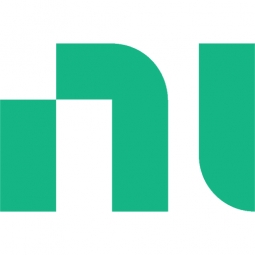
|
Condition Monitoring and Diagnostics System for China Steel
China Steel Corporation (CSC) is the largest integrated steel maker in Taiwan. Our goal is to enhance facility maintenance and management efficiency. First and foremost, to achieve this goal we know we need to understand the tradeoffs between the set-up costs of machine condition monitoring (MCM) devices and the losses we experience due to unexpected faults. We also need to consider the critical pieces of equipment we own and the degree of difficulty involved in maintaining them. Effective MCM can help maintenance managers understand the condition of critical equipment in real time, which is a competitive advantage for steel manufacturers.Our first self-developed facility online monitoring and diagnosis system (FOMOS) was installed on the CSC production line in 1998. The system performed well for monitoring certain issues such as mill vibrations, but after a few years the system became less reliable. We found that the hardware and software had limited functionality. We knew we could build a smarter, more connected system that could use the latest advances in processing power, wireless networks, and software connectivity. We realized that it was fairly easy to develop an MCM system, but it was difficult to address specific challenges we faced.Our biggest challenge to address was how to detect equipment abnormalities at an early stage without creating a large number of false alarms. Since vibration is a relative condition indicator and strongly affected by system or structural dynamic rigidity and transmissibility, in real situations, it is common to find that two pieces of the same equipment at similar locations and operating conditions exhibit different vibration levels after several years of operation. Vibration signals can be a key indicator for information such as wear, imbalance, misalignment, impact load, and bearing fault by using different signal processing and algorithms.A conventional monitoring and diagnosis system uses the same or very few indicators and criteria to monitor and diagnose various machine conditions regardless of the nature of the operation of the machine. Therefore, these systems are prone to false alarms or missing alarms. To make it worse, with diverse monitored equipment, a complicated operation regime, and widespread applications in numerous process lines in an integrated steel factory, it is impractical to achieve our goals with only a few diagnosis experts. Thus, we discovered the best way to improve the effectiveness and efficiency of our MCM system was to introduce some artificial intelligence methods.
|
|
|
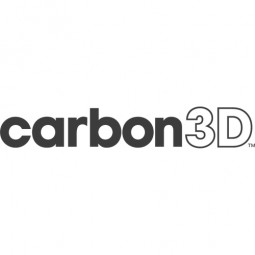
|
Ford Motor Company on the Road to 3D Manufacturing
To date, key challenges have stood in the way of 3D printing becoming a manufacturing tool for the automaker. The first issue is a fundamental one — conventional 3D printing technologies make parts layer-by-layer, slowly crafting one layer at a time, creating parts that aren’t nearly as robust as those stamped or injection molded. While the slow speed of this process is a major drawback, the bigger problem is that the parts produced are not isotropic and not durable enough to be used in production vehicles. In addition, most parts used in vehicles today must withstand temperature extremes from the hottest desert to the coldest Arctic environments and still maintain their integrity. With only a handful of stock materials available for 3D printers, meeting the automaker’s unique demands has not been possible.
|
|
|
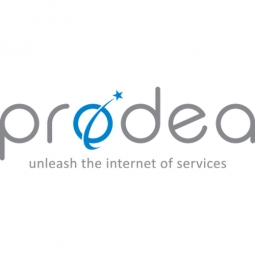
|
Selling more with Whirlpool
Whirlpool wanted to add connectivity to appliances and transform the company's relationship with customers. Traditionally, Whirlpool interaction with customers was limited to purchases made once every ten years. Connected washer and dryers provide exciting new features like remote management of start times and inter-machine communication.
|
|
|
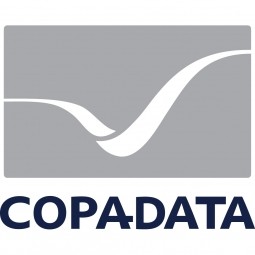
|
Zenon the Ideal Basis for An Ergonomic HMI
KHS develops and produces machines and equipment for filling and packaging in the drinks industry. Because drinks manufacturing, filling and packaging consist of a number of highly complex processes, the user-friendly and intuitive operation of equipment is increasingly gaining in significance. In order to design these processes as simple as possible for the user, KHS decided to introduce a uniform, transparent and standardized solution to the company. The HMI interface should meet the requirement for people with different qualifications and enable them to work on a standard platform.
|
|
|
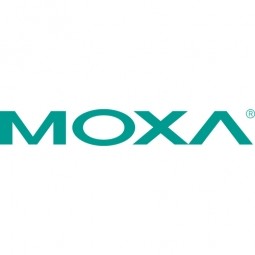
|
Wireless Automated Meter Reading for Power Distribution Networks
In the Americas and Europe, electric power is provided by a number of private power plants distributed over wide areas. Optimizing distribution and transmission to meet market demand is always a challenge, particularly since power suppliers need to monitor data usage and combine the data for power generation, distribution, and transmission. Deploying long range wireless automated meter reading will allow power suppliers to better gauge and respond to market demand and optimally allocate energy distribution to control rising energy costs and service interruptions. The customer in this application is a cooperatively owned power services company with over $816 million in assets and nearly 4.3 million MWh in energy sales as of 2007. It supplies power and provides other management services in the western US. The company provides leadership and management of power supply options and continues to implement increasingly sophisticated power management techniques and innovative technologies, giving utilities in the region the ability to offer low-cost power options at stable prices. System Requirements • Long range wireless transmission (satellite, GPRS, WCDMA, microwave, etc.) over wide territories. • Need to transmit data in a low bandwidth network environment. • Self-monitor connection status, when the connection fails, system reboots to restore communication.
|
|
|

|
Benteler Automobiltechnik automates plants & processes
Benteler Automotive is looking for a solution that can solve the following situations: - Operation of 70 plants in 29 countries with worldwide reliance on components - Identify a seamless way to connect people, process, data and things to expedite the production process
|
|
|
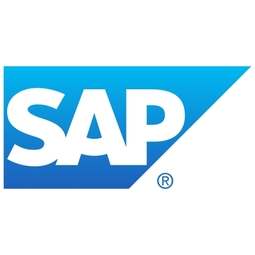
|
SAP Leonardo Enabling Rocket Science
At times, ULA has as many as 15 different operating systems dedicated to overlapping processes, such as rocket design, testing, and launch. Multiple systems created unnecessary costs and unwanted confusion among workers at offices, factories, and launch sites in different location. In order to improve collaboration and transparency during vital activities that directly influence mission success, ULA wanted to improve data sharing and streamline manufacturing processes.
|
|
|

|
Remote Condition Monitoring for London Underground
London Underground serves 1.7 billion passengers per year and the Victoria Line accounts for 213 million of those journeys. The line carries 89.1 million passengers per year in the peak service, offering the most intensive service on the underground network. Over the past eight years, a £1 billion investment programme upgraded and replaced the Victoria Line’s rolling stock and signaling and control systems to deliver a service capable of running more than 33 trains per hour. The new signalling system uses 385 Jointless Track Circuits (JTCs) to detect train position, maintain safe train separation and deliver train headways capable of meeting an extremely demanding timetable. Track circuits are the sole means of train detection and play a critical role in the safe and reliable operation of the railway; however, no provision was made for any condition monitoring during the design and installation. Because of the critical nature of the asset, a failed track circuit has a major impact on the service and constitutes the biggest cause of passenger disbenefit on the Victoria Line, amounting to £1.5 million since their introduction (London Underground CuPID database for Track Circuit failures since 2012). The Victoria Line Condition Monitoring Team, made up of six professional engineers with rail, software, electrical, mechanical, network and engineering backgrounds, delivered the solution. National Instruments Silver Alliance Partner Simplicity AI supported the project by providing additional software consulting services. We used the company’s enormous breadth of expertise to deliver the system onto an operational railway within one year of the concept design. The scope of this project consisted of designing, integrating and installing an intelligent remote condition monitoring system that could perform real-time analysis of voltage and frequency for all 385 JTCs across a 45 km of deep tube railway to predict and prevent failures and subsequent loss of passenger service. We took advantage of the accuracy, reliability and flexibility of NI hardware and software to implement an innovative system to reduce the lost customer hours experienced on the Victoria Line. The system is forecast to reduce lost customer hours by 39,000 per year—an estimated £350,000 savings per year in passenger disbenefit.
|
|
|

|
Remote Monitoring for Environmental Compliance
Emerson wanted to provide a connected environmental analyzer to their customers. They wanted to leverage IoT technologies to provide a software solution that was easy to use, real-time and centralized. Compliance with pollution control board guidelines and the ability to remotely calibrate and troubleshoot these devices was the primary objective. Requirements - Centralized Remote Monitoring. - IoT Based Smart Environmental Analyzers. - Remote Calibration and Troubleshooting. - User Friendly Application. - Reporting & Dashboards. - Compliance with pollution control board guidelines.
|
|
|
_1.jpg)
|
IIC - Track and Trace Testbed
Factory systems can detect - within a meter - the location of a tool; Misuse of tools can result in serious accident or injury; The production of many industrial and consumer goods requires exacting work - down to the precise force used to tighten a screw. GOAL Manage smart, hand-held tools in manufacturing, maintenance, and industrial environments
|
|
|

|
Avoid Unplanned Downtime with Predictive Analytics
Objectives • Create an innovative IT environment that supports the move toward a solution-provider business model • Enhance existing business processes and leverage the power of Big Data and predictive maintenance to become more proactive, customer oriented, and competitive • Leverage the SAP HANA® platform to transform and simplify the entire SAP® solution landscape
|
|
|
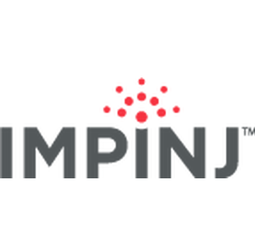
|
Retailer Uses RFID Scanner to Improve Efficiency
Patrizia Pepe wished to improve the logistics of their warehouse: accepting incoming goods from their production sites, movement of items throughout
the warehouse, and packaging of goods for distribution to the retail locations. They initially tried to use barcodes for this function. Because barcodes must be individually scanned within a line-of-sight, the acceptance of goods coming into the warehouse was too time consuming. Working with the University of Florence, Patrizia Pepe instituted a five-month pilot project beginning in August of 2009 to test the validity of an RFID solution. The pilot involved tagging of about 60,000 items for the second seasonal collection, and convinced the company to move forward with tagging all items.
|
|




